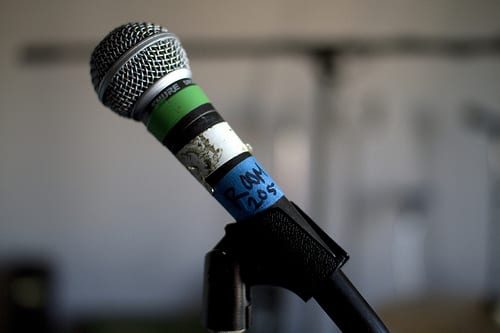 Have you ever been listening to the radio or a performance, enjoying the song, when you realize you have no clue what words are being said? For some genres, this might be simply part of the style. For others, it can be pretty frustrating for listeners! This is where diction and articulation come into play, and it’s a skill that takes practice. If you’d like to improve your diction, here are a few helpful exercises to try:
Have you ever been listening to the radio or a performance, enjoying the song, when you realize you have no clue what words are being said? For some genres, this might be simply part of the style. For others, it can be pretty frustrating for listeners! This is where diction and articulation come into play, and it’s a skill that takes practice. If you’d like to improve your diction, here are a few helpful exercises to try:
– Lip trills (or “motor mouth”).
Lip trills are an excellent warm-up that will relax your lips. Tension in the mouth or lips can contribute to poor enunciation. Try working your way up the scale or try different warm-up exercises while doing this, keeping your air flow even. If you’re having trouble with this, use your fingers to lightly push your cheeks in, which will give your lips some added support.
– Record yourself.
Often, we”re so focused on all of the other details of the song (staying in tune, hitting especially high or low notes, even just remembering the words), that we simply aren’t a good judge of our diction. Try recording yourself singing the piece you’re working on, and listen back critically. If you discover certain words are falling, highlight or mark them in your score so you remember. Simply reading aloud or practicing tongue-twisters can also be great to record, so you can keep track of your progress.
– Isolate the vowels and the consonants.
Even though it may sound counter-productive, paying particular attention to the vowels in your words can offer an instant improvement, not only to your sound (as we discussed in this article) but to how clear you are. Try isolating each by singing a simple song (“Row, Row, Row Your Boat,” for example), but replacing all of the words with their corresponding vowel sounds. Next, add the consonants back in and make sure each word is crisp and clear. Be especially aware of diphthongs, which is when there are two distinct vowel sounds within a syllable, such as the “ay” in “day.” In this case, it’s best to hold the first vowel for the majority of the note, then connect the second part, which will sound clearer to the audience.
Of course, the singing style you’re going for can change your focus. For example, blues or jazz singers might want to try a more conversational tone and less articulation. Need help determining this? Your vocal teacher can help you figure out how to incorporate the right kind of diction with your personal style.
You might also like…
– The Importance of Vowels
– How to Sing With Emotion: 10 Must-Read Tips
– Build Breath Support With This Physical Warm-Up
Photo by Incase.
Suzy S.
